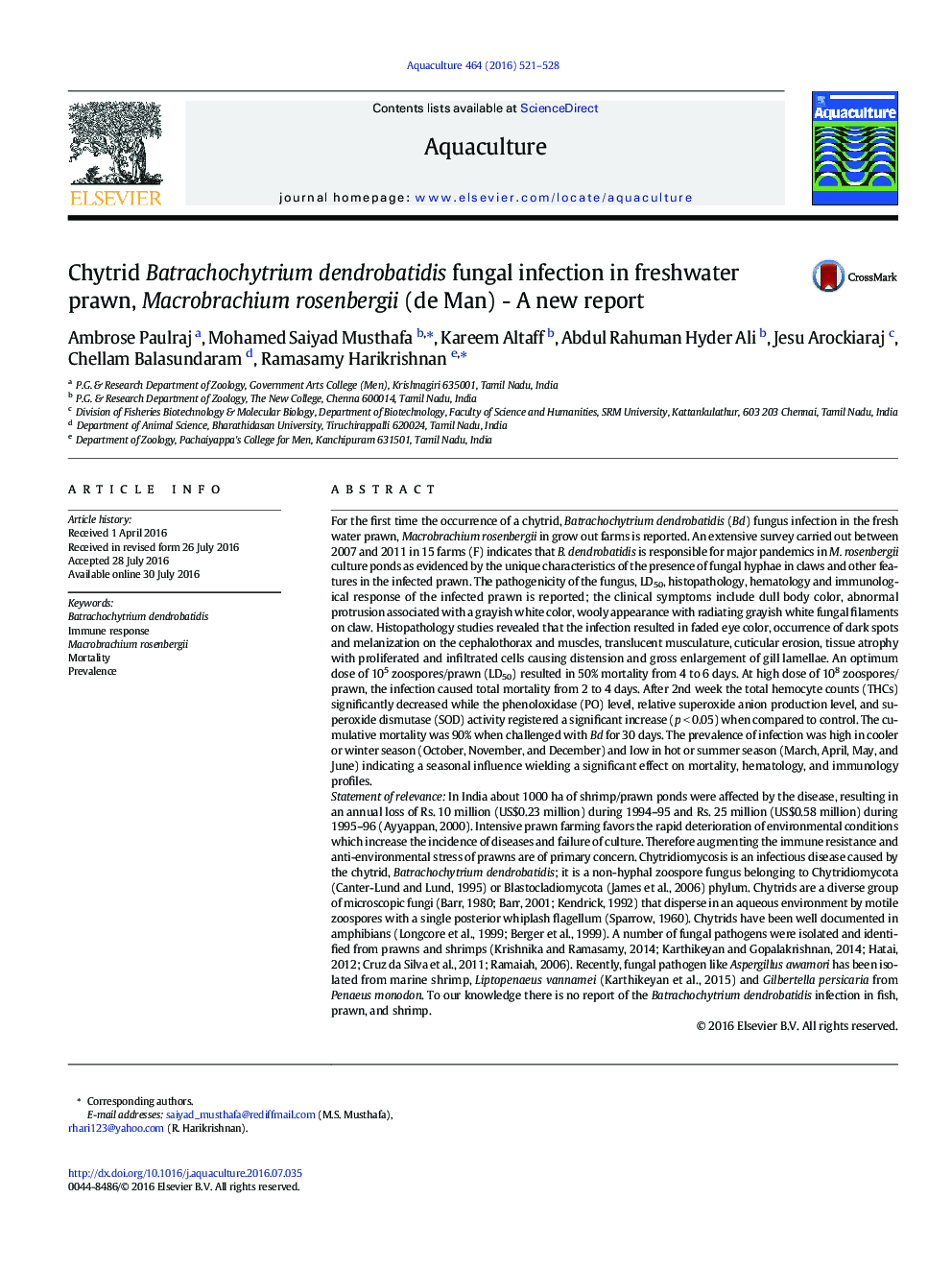| Article ID | Journal | Published Year | Pages | File Type |
|---|---|---|---|---|
| 8493724 | Aquaculture | 2016 | 8 Pages |
Abstract
In India about 1000Â ha of shrimp/prawn ponds were affected by the disease, resulting in an annual loss of Rs. 10 million (US$0.23 million) during 1994-95 and Rs. 25 million (US$0.58 million) during 1995-96 (Ayyappan, 2000). Intensive prawn farming favors the rapid deterioration of environmental conditions which increase the incidence of diseases and failure of culture. Therefore augmenting the immune resistance and anti-environmental stress of prawns are of primary concern. Chytridiomycosis is an infectious disease caused by the chytrid, Batrachochytrium dendrobatidis; it is a non-hyphal zoospore fungus belonging to Chytridiomycota (Canter-Lund and Lund, 1995) or Blastocladiomycota (James et al., 2006) phylum. Chytrids are a diverse group of microscopic fungi (Barr, 1980; Barr, 2001; Kendrick, 1992) that disperse in an aqueous environment by motile zoospores with a single posterior whiplash flagellum (Sparrow, 1960). Chytrids have been well documented in amphibians (Longcore et al., 1999; Berger et al., 1999). A number of fungal pathogens were isolated and identified from prawns and shrimps (Krishnika and Ramasamy, 2014; Karthikeyan and Gopalakrishnan, 2014; Hatai, 2012; Cruz da Silva et al., 2011; Ramaiah, 2006). Recently, fungal pathogen like Aspergillus awamori has been isolated from marine shrimp, Liptopenaeus vannamei (Karthikeyan et al., 2015) and Gilbertella persicaria from Penaeus monodon. To our knowledge there is no report of the Batrachochytrium dendrobatidis infection in fish, prawn, and shrimp.
Related Topics
Life Sciences
Agricultural and Biological Sciences
Aquatic Science
Authors
Ambrose Paulraj, Mohamed Saiyad Musthafa, Kareem Altaff, Abdul Rahuman Hyder Ali, Jesu Arockiaraj, Chellam Balasundaram, Ramasamy Harikrishnan,
